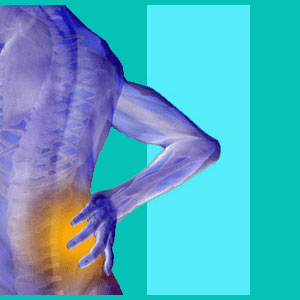
A far lateral herniated disc is an enigma for many patients and doctors alike, since it bulges or ruptures outside the spinal canal, not affecting the nerve root at the typical level, but potentially compressing the nerve root at the level above the prolapsed disc.
This fascinating type of herniated disc is often misread on MRI studies, leading to frustrating treatment results and continuing pain. However, this condition can also be blamed incorrectly for symptoms which it does not create, especially when specialized nerve conduction testing is not properly completed by the diagnostician.
The focus of this discussion will examine far lateral herniations, which should not be confused with more typical posterolateral bulging discs.
What is a Far Lateral Herniated Disc?
Far lateral herniations are also called far lateral disc protrusions, far lateral disc bulges or extraforaminal herniated discs. In many cases, they are also referred to simply as lateral herniated discs, although this term is also often used to describe posterolateral herniations, which can make matters even more confusing.
I like to avoid using the term lateral herniation alone, to prevent the question as to what exact type of lateral is being referred to and usually stick to either far lateral or posterolateral in my own articles. Too bad doctors do not do the same. So many patients suffer from the diagnostic name game and have a difficult time actually deciphering the exact condition which affects them due to the diversity of possible nomenclature utilized by their physicians.
Far Lateral Bulging Disc Details
The far lateral disc protrusion can enact pain by causing a pinched nerve. However, unlike most herniations where the same level nerve is compressed, the far lateral disc bulge compresses the root above the affected level, causing a discrepancy between the symptoms seen and the symptoms expected.
The vast majority of these issues occur in the lumbar spine, typically at L3/L4, L4/L5 or L5/S1.
In a usual posterolateral herniation, the possibility of nerve root compression exists with the affected nerve being the same level as the herniation. For example, a herniated disc at L4/L5 would potentially compress the L5 nerve root. In a far lateral case, the same herniation at L4/L5 would compress the L4 root above the bulging level.
Guidance on Treating Far Lateral Herniated Discs
These types of herniations are not common, but they do occur. Unfortunately, they can be difficult to diagnose properly and even once visualized, they can still fall into the many traps suffered by other types of disc bulges.
Many far lateral pathologies are not discovered and can cause pain which defies logic. Others are found, but are not the actual source of pain, since they may be near a nerve root, or even touch a nerve root, without eliciting any symptoms. In these cases, the prolapse is nothing more than a herniated disc scapegoat.
In a few lucky patients, structural reasons for pain are correctly identified as stemming from a far lateral disc protrusion and successfully treated. I wish I could say this happens often, but unfortunately, it represents the exception to the rule of disappointing therapy results.
Herniated Disc > What is a Herniated Disc > Far Lateral Herniated Disc




